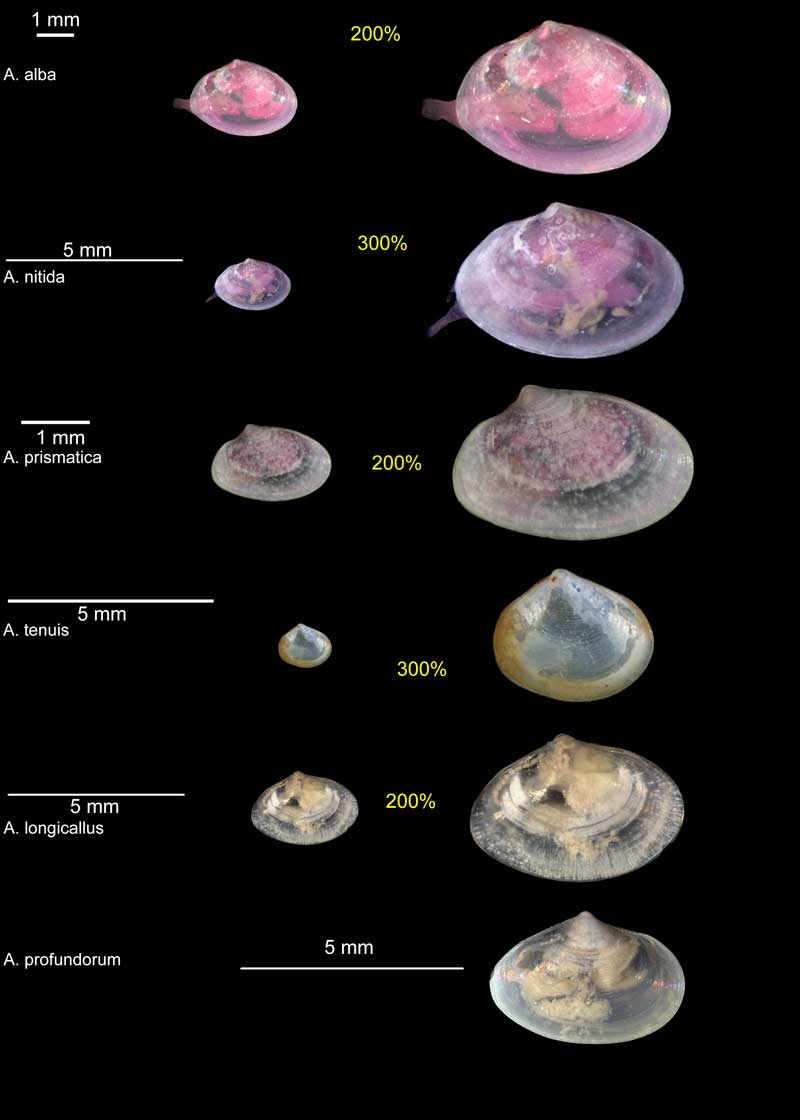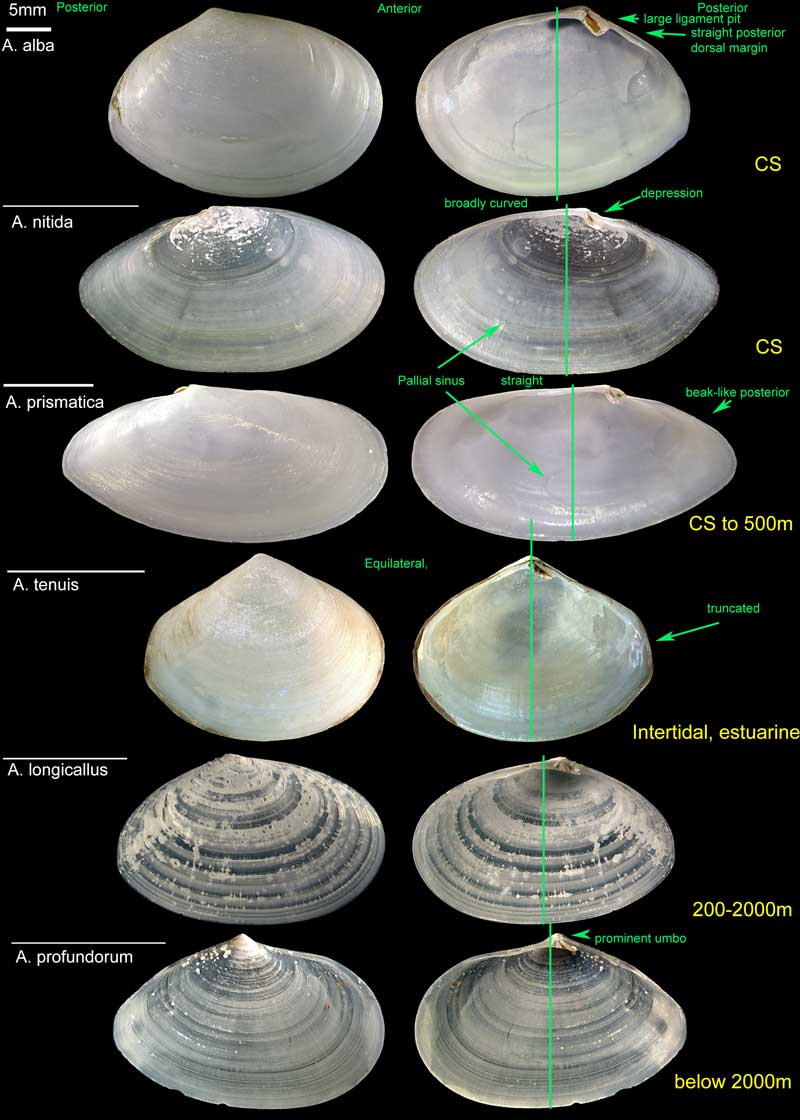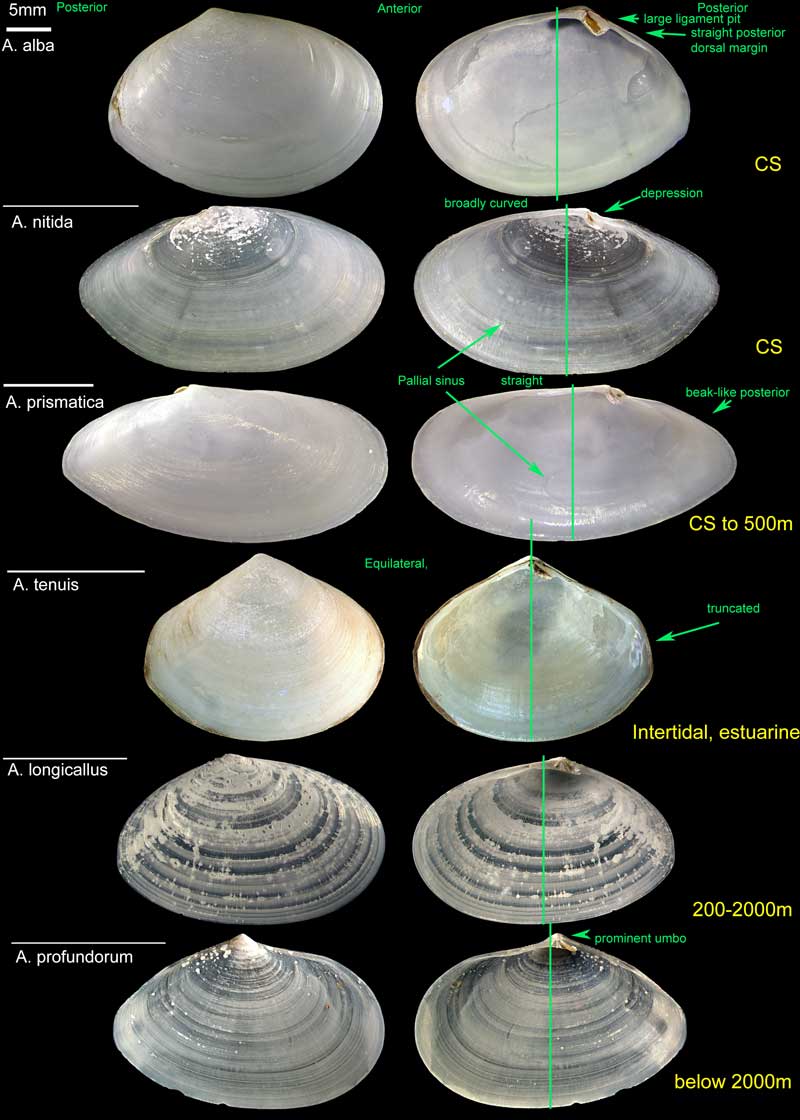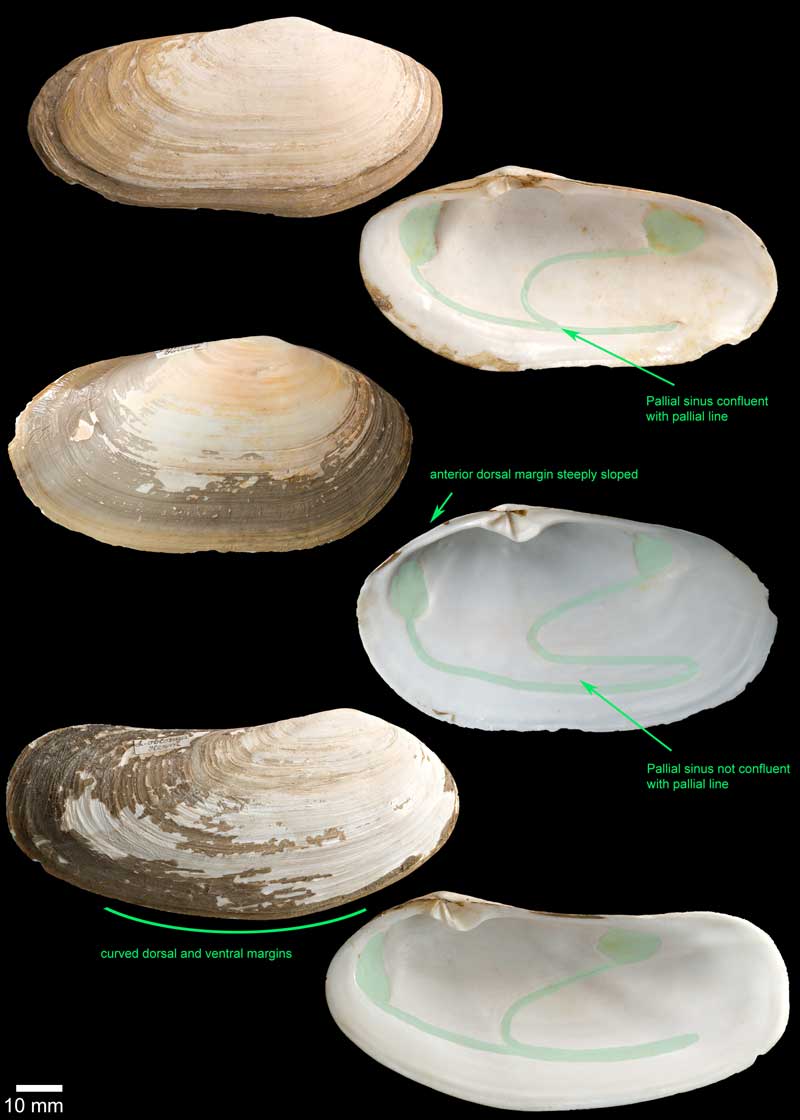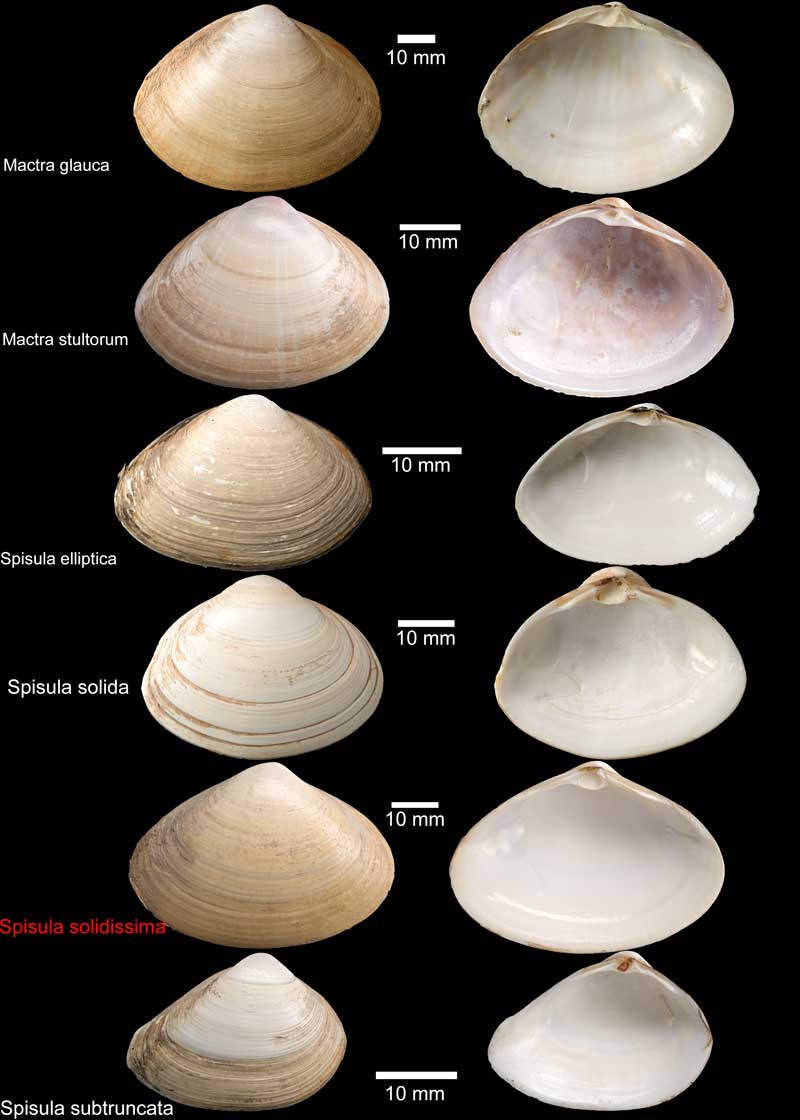Tools for identification
Here we provide several types of keys to choose from, depending on your level of knowledge regarding the species in question.
If you do not know which superfamily the specimen belongs to then you may wish to use either the dichotomous key to major taxa or the pictorial key. If you have a specimen from the deep sea (500 - 5000m), you can select the deep-sea bivalve key.If you know which superfamily or group it belongs to then go straight to that key in the Superfamilies / Major Groups section.Some of the more difficult to identify groups may have their own keys or comparative plates available to use in the Difficult Genera / Groups & Comparative Plates section.
The keys will continue to be developed, with images added and updated where needed.
Major Taxa & Pictorial Keys
- Major Taxa - Key to major taxa provides an interactive, dichotomous key to superfamilies/major groups. It links to the keys to superfamilies/major groups below and enables the user to get identification right down to species level.
- Pictorial Key - A pictorial key to all species that gives a ‘running choice’ of possible species as the user makes choices on outline, sculpture, ligament, dentition etc…
Deep-Sea Bivalves (500 - 5000m)
These keys are designed to work with species living beyond the shelf edge 500-5000m. This range is that adopted by Allen (2008) for his review of the deep Atlantic bivalve fauna. Caution must be adopted when working with samples from the shelf edge or continental margin zone (CMZ) as it is not possible to be totally confident that some shelf species do not range into the CMZ. It is perhaps advisable to use the master keys when working in this area. The fauna of the Deep-sea has a characteristic make-up with the predominance of some groups and the absence of others (Allen, 2008). Allen (2008) lists some 219 species from the "Western European Basin" exceeding the numbers included here due to the much larger area covered as it stretches west to the Mid-Atlantic Ridge and south to the Straits of Gibraltar. However it is quite likely that more species will be found within the UK EEZ and this should be borne in mind when using this key.
- Key to Bivalvia of the Deep-Sea - This key includes all the groups found at depths of 500-5000m. If you are familiar with the taxonomic groups found at these depths then you may with to use the separate keys below.
- Arcoida (Arcoidea & Limopsoidea) (500 - 5000m)
- Cuspidariidae - This is the same key as presented in the both the Deep-Sea Bivalves and Superfamilies / Major Groups sections, as all cuspidariids have been found at or beyond the shelf edge.
- Galeommatoidea (500 - 5000m)
- Limoidea (500 - 5000m)
- Lyonsiidae, Verticordiidae & Poromyidae (500 - 5000m)
- Mytiloidea (500 - 5000m)
- Pectinoidea (500 - 5000m)
- Protobranchia (500 - 5000m)
- Thyasiroidea (500 - 5000m)
- Yoldiellinae - Most Yoldiellinae have small and semitransparent shells. The gut-loop (digestive coil), which can often be seen through the shell of preserved specimens, can often be a good diagnostic feature. This key employs both shell and gut-loop configuration, as it is likely that most users will be working with complete, preserved specimens, not just shells.
Superfamilies / Major Groups
Keys to superfamilies/major groups. If the user knows which group the specimen belongs to then selecting one of these keys will take you straight to that superfamily. At any point if you prefer to peruse all the species within that group then use the search facility to search for that family or superfamily.
- Anomalodesmata - A key to the Pandoroidea, Pholadomyoidea, Poromyoidea and Thracioidea. The Cuspidariidae are in a separate key.
- Arcoida (Arcoidea & Limopsoidea)
- Cardioidea - A key to the superfamily Cardioidea known collectively as the cockles
- Crassatelloidea
- Galeommatoidea/Neoleptonidae - A key to the tiny Galeommatoidea. The taxonomic group of Galeommatoidea still needs further study and we hereby include the Neoleptonidae (from Veneroidea) due to their small adult size and confusion with members of the Galeommatoidea.
- Hiatelloidea & Basterotiidae
- Limoidea - A key to the file shells
- Mactroidea
- Myoidea
- Ostreoidea, Chamoidea & Anomioidea - A key to the the three superfamilies known to exhibit a cementing lifestyle: Ostreoidea, Chamoidea & Anomioidea
- Pectinoidea - A key to the scallops
- Protobranchia - A key to Protobranchia - Nuculanoidea, Nuculoidea and Pristiglomoidea. Does not include Yoldiellinae
- Pterioida & Mytiloida - A key to the wing shells and mussels
- Rock and wood borers - A key to piddocks and shipworms - Teredinidae are keyed out using just pallets as some of the shells can be very similar
- Solenoidea
- Tellinoidea
- Thyasiroidea - Many thyasirids have small and semitransparent shells. In preserved specimens the anatomy can often be seen through the shell. The worm-like foot is typical of the family and the gills are a good diagnostic feature. The presence of one or both demibranchs along with the degree of reflection of the filaments are diagnostic at the genus level. This key employs both shell and anatomical characters as it is likely that most users will be working with complete specimens not just shells.
- Veneroidea and venerid-like clams - A key to the Veneroidea and other venerid-like clams
- Cuspidariidae - This is the same key as presented in the both the Deep-Sea Bivalves and Superfamilies / Major Groups sections, as all cuspidariids have been found at or beyond the shelf edge.
- Yoldiellinae - Most Yoldiellinae have small and semitransparent shells. The gut-loop (digestive coil), which can often be seen through the shell of preserved specimens, can often be a good diagnostic feature. This key employs both shell and gut-loop configuration, as it is likely that most users will be working with complete, preserved specimens, not just shells.
Difficult Genera / Groups & Comparative Plates
If the use knows which genus the specimen belongs to but has difficulty in distinguishing species then one of these keys should help, or choose the comparative plate of that genus. Main characters are highlighted to aid in identification.


